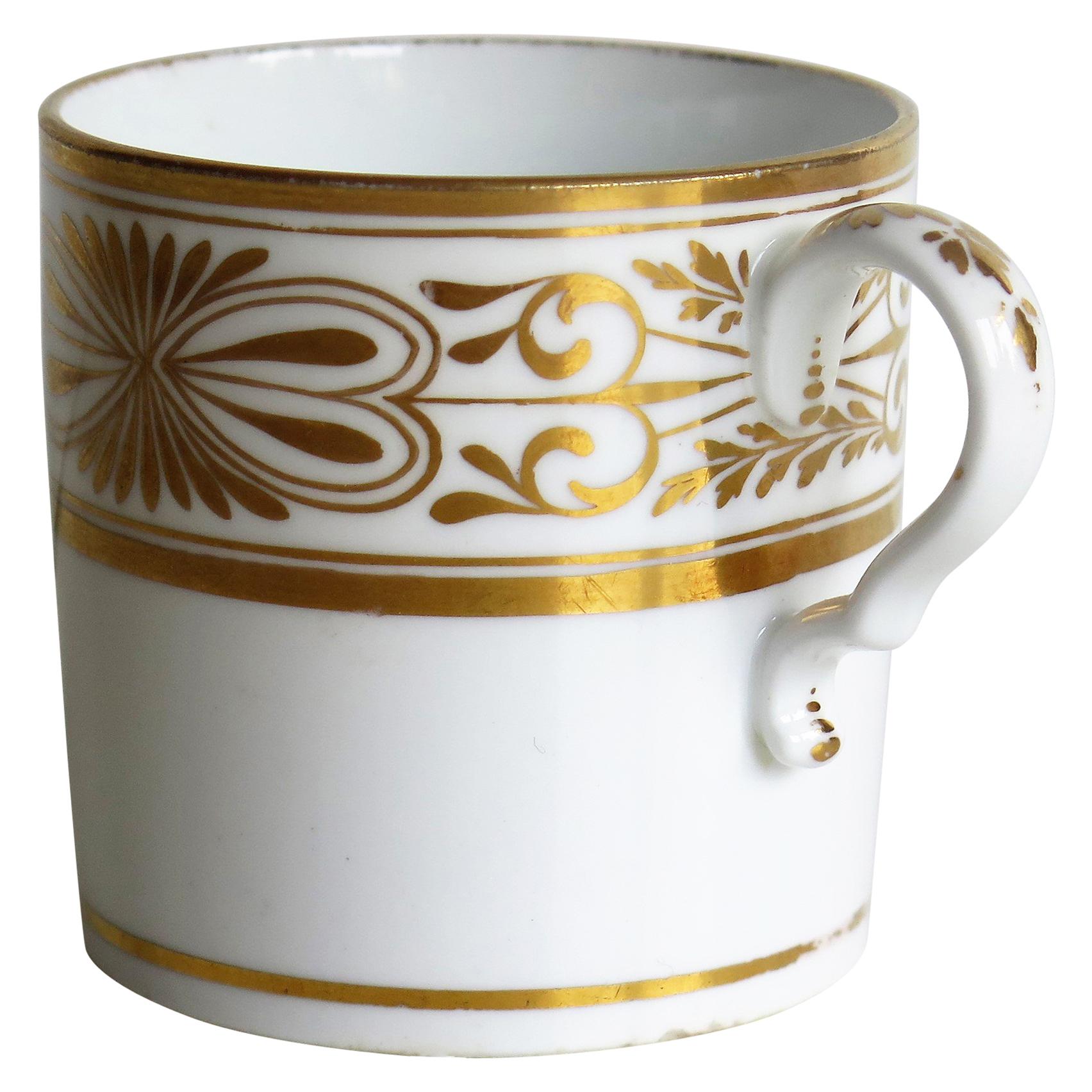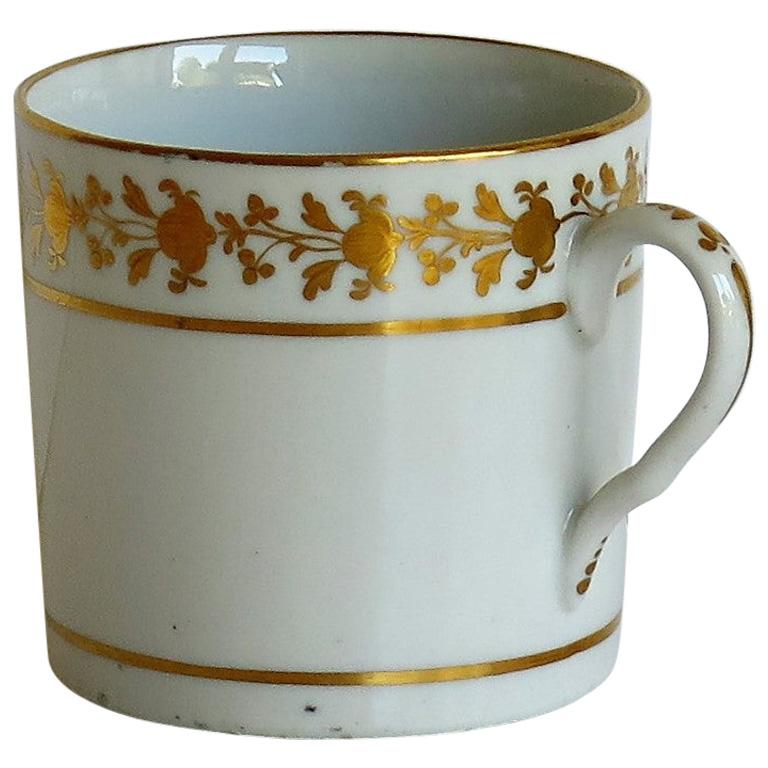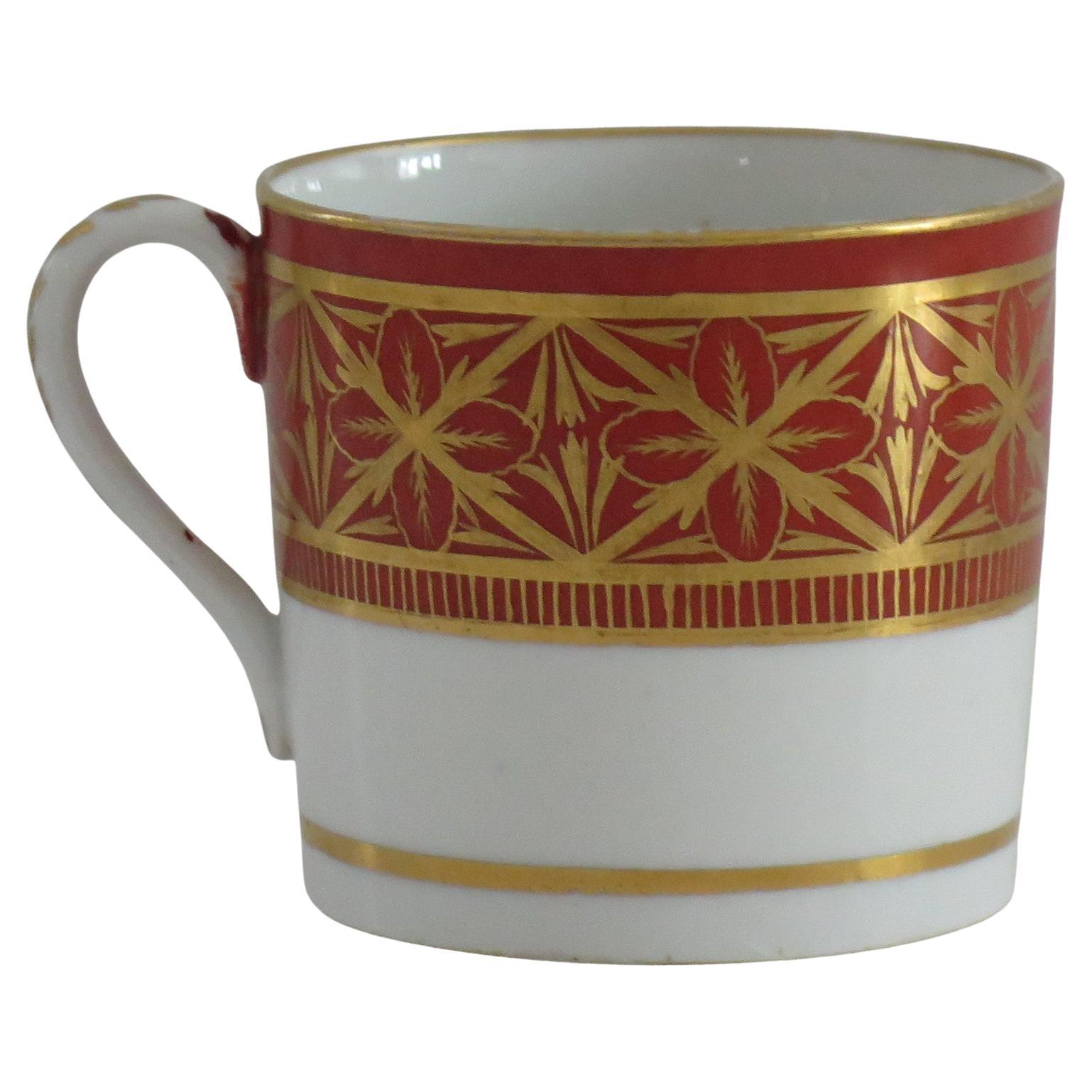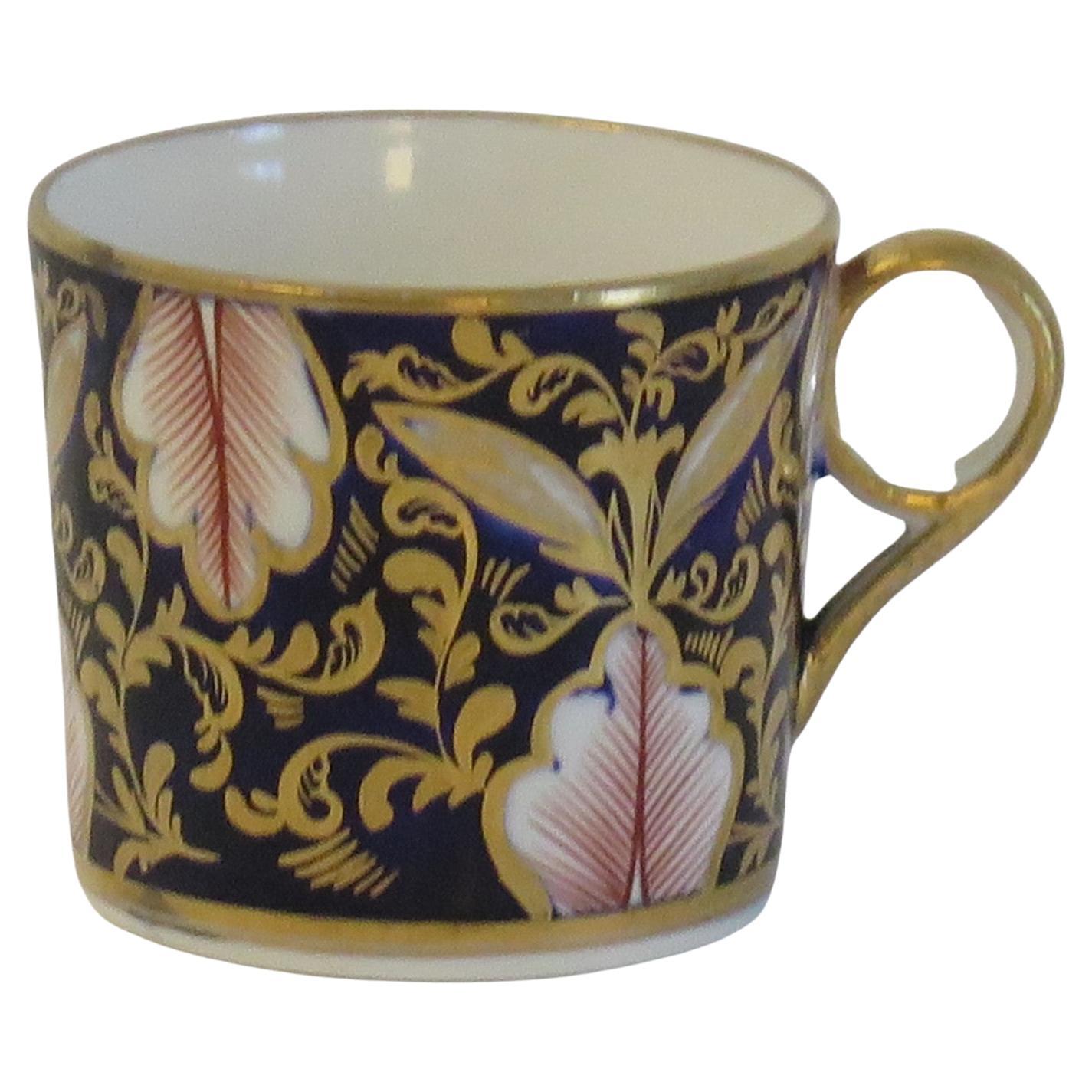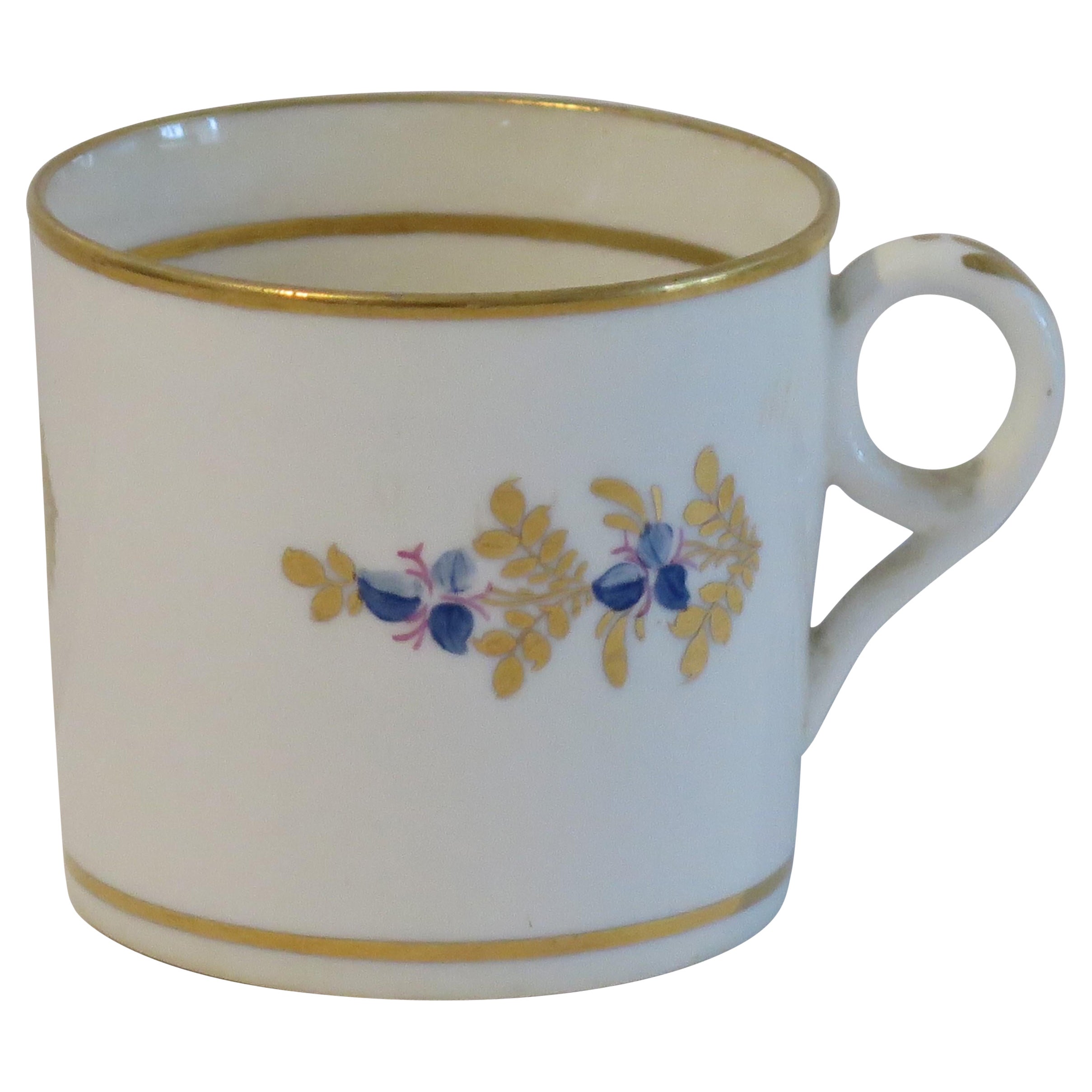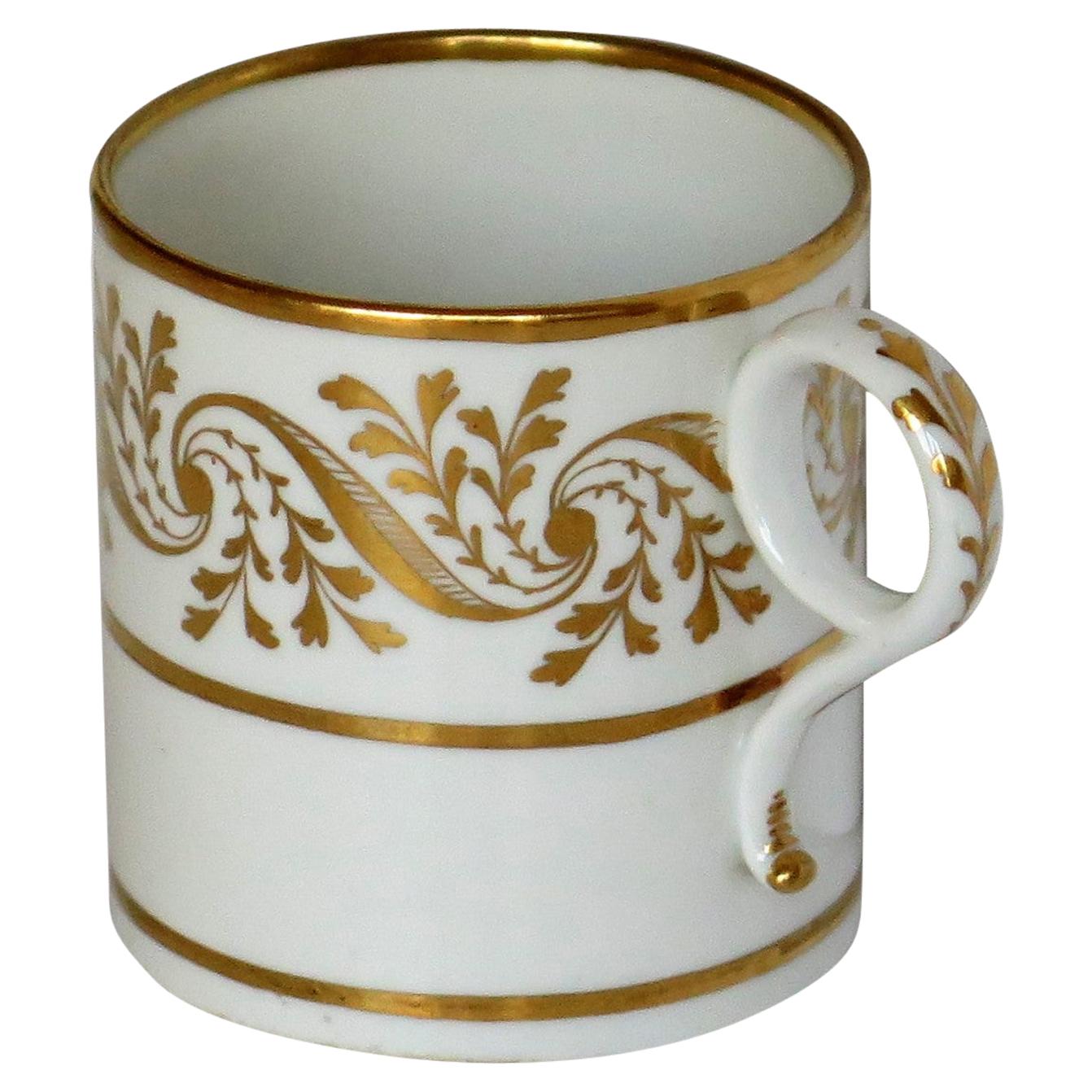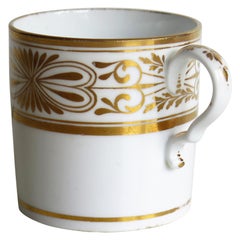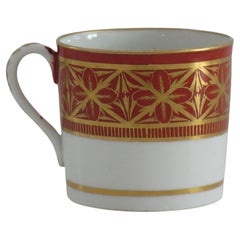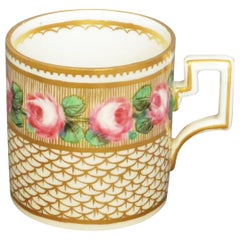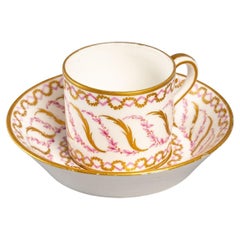Items Similar to Early 19th Century Spode Porcelain Coffee Can All Hand Gilt Pattern, circa 1810
Video Loading
Want more images or videos?
Request additional images or videos from the seller
1 of 15
Early 19th Century Spode Porcelain Coffee Can All Hand Gilt Pattern, circa 1810
$160.54
$256.0437% Off
£116
£18537% Off
€137.17
€218.7637% Off
CA$219.75
CA$350.4637% Off
A$246.13
A$392.5437% Off
CHF 128.07
CHF 204.2537% Off
MX$2,989.24
MX$4,767.3237% Off
NOK 1,623.60
NOK 2,589.3637% Off
SEK 1,531.99
SEK 2,443.2637% Off
DKK 1,023.49
DKK 1,632.2837% Off
Shipping
Retrieving quote...The 1stDibs Promise:
Authenticity Guarantee,
Money-Back Guarantee,
24-Hour Cancellation
About the Item
This is a good example of an English George III period, porcelain, coffee can (cup), made by Spode in the early 19th century, circa 1810.
The can is nominally straight sided and has the Spode loop handle with a pronounced kick or kink to the lower part, with a lower attachment that curves out from the cup. Spode is the only factory with a handle of this exact shape.
The piece has a beautifully hand gilded continuous classical upper border pattern of leaf sprigs and ovals with further gilding to the upper and lower rims and the outer handle. All the decoration on this can is hand applied gold gilding.
The Can is unmarked to the base but is definitely Spode in our opinion.
- Attributed to:Spode (Manufacturer)
- Dimensions:Height: 2.5 in (6.35 cm)Width: 3.25 in (8.26 cm)Depth: 2.5 in (6.35 cm)
- Style:Regency (Of the Period)
- Materials and Techniques:
- Place of Origin:
- Period:
- Date of Manufacture:circa 1810
- Condition:Wear consistent with age and use. Some wear to the gilding from normal use- please see images NO Damage, NO Restoration.
- Seller Location:Lincoln, GB
- Reference Number:Seller: P 8441stDibs: LU990311983181
About the Seller
5.0
Platinum Seller
Premium sellers with a 4.7+ rating and 24-hour response times
Established in 1993
1stDibs seller since 2013
1,390 sales on 1stDibs
Typical response time: <1 hour
Associations
LAPADA - The Association of Arts & Antiques Dealers
- ShippingRetrieving quote...Shipping from: Lincoln, United Kingdom
- Return Policy
Authenticity Guarantee
In the unlikely event there’s an issue with an item’s authenticity, contact us within 1 year for a full refund. DetailsMoney-Back Guarantee
If your item is not as described, is damaged in transit, or does not arrive, contact us within 7 days for a full refund. Details24-Hour Cancellation
You have a 24-hour grace period in which to reconsider your purchase, with no questions asked.Vetted Professional Sellers
Our world-class sellers must adhere to strict standards for service and quality, maintaining the integrity of our listings.Price-Match Guarantee
If you find that a seller listed the same item for a lower price elsewhere, we’ll match it.Trusted Global Delivery
Our best-in-class carrier network provides specialized shipping options worldwide, including custom delivery.More From This Seller
View AllEarly 19th Century Spode Porcelain Coffee Can Hand Gilded Pattern 1099, Ca 1810
By Spode
Located in Lincoln, Lincolnshire
This is a fine example of an English George III period, porcelain, coffee can (cup), made by Spode in the early 19th century, circa 1810.
The can is nominally straight sided and h...
Category
Antique Early 19th Century English Regency Ceramics
Materials
Porcelain
$182 Sale Price
37% Off
Georgian Coalport Porcelain Coffee Can Hand Gilded Pattern, English circa 1807
By Coalport Porcelain
Located in Lincoln, Lincolnshire
This is a good quality coffee can that we attribute to the Coalport Porcelain works, Shropshire, England, made during the John Rose period of the George 111rd years, circa 1805-1810.
The coffee can is nominally parallel, tapering slightly to the base, with a simple loop handle with one lower kink and pointed attachments. It has a shallow foot recess with obtuse corner and is unmarked to the base.
The pattern is beautifully hand painted in an all gold gilt floral upper border pattern with further gilding on the body above the base rim, around the upper rim and to the outer handle.
We date this piece to the late George third...
Category
Antique Early 19th Century English George III Ceramics
Materials
Porcelain
$155 Sale Price
42% Off
Coalport Coffee Can Porcelain Hand Painted and Gilded Pattern, circa 1810
By Coalport Porcelain
Located in Lincoln, Lincolnshire
This is a good quality coffee can that we attribute to the coalport porcelain works, Shropshire, England, made during the John Rose period of the George 111rd years, circa 1805-1810.
The coffee can is nominally parallel, tapering slightly to the base, with a simple loop handle and pointed attachments. It has a shallow foot recess with obtuse corner and is unmarked to the base.
The pattern is beautifully hand painted in gold gilt over a burnt orange ground, upper border pattern, with further gilt decoration to the outer handle and gilding around the upper and lower rims.
We date this piece to the late George third...
Category
Antique Early 19th Century English George III Porcelain
Materials
Porcelain
$166 Sale Price
57% Off
Fine Georgian period Minton Porcelain Coffee Can Pattern 641, Circa 1805
By Minton
Located in Lincoln, Lincolnshire
This is a finely painted porcelain coffee can made by the Minton factory, England, in the reign of George 111 in the early 19th century, circa 1805
Straight sided coffee cans wer...
Category
Antique Early 19th Century English George III Ceramics
Materials
Porcelain
$276 Sale Price
61% Off
George 111 Early Minton Porcelain Coffee Can Hand Painted Pattern 76, Ca 1805
By Minton
Located in Lincoln, Lincolnshire
This is a finely painted porcelain coffee can made by the Minton factory, England, in the reign of George 111 in the early 19th century, circa 1805
Straight sided coffee cans were only originally made for about the first 20 years of the 19th century and are very collectable.
The porcelain can is well potted with a ring handle.
It is finely hand decorated in Minton's recorded Pattern Number 76, having three sets of horizontally painted...
Category
Antique Early 19th Century English George III Porcelain
Materials
Porcelain
$232 Sale Price
60% Off
Georgian Worcester BF&B Porcelain Coffee Can in Hand Gilded Pattern, circa 1810
By Barr, Flight & Barr Worcester
Located in Lincoln, Lincolnshire
This is a very good quality coffee can in a hand gilded pattern made by Worcester during the Barr, Flight & Barr period (BFB) of George 111rd years, circa 1807-1813.
The coffee ca...
Category
Antique Early 19th Century English George III Ceramics
Materials
Porcelain
$204 Sale Price
44% Off
You May Also Like
Richard Ginori Italian White & Gold Coffee or Tea Cup, circa 1960s, 8 Avail
By Richard Ginori
Located in New York, NY
Very beautiful vintage Italian white porcelain with gold gilt coffee or tea cup(s) by designer Richard Ginori, Italy, circa mid-20th century, circa 1960s. Colors include: gold gilt a...
Category
Mid-20th Century Italian Classical Roman Porcelain
Materials
Gold
Italian Gilt Porcelain Cup
By Real Fabbrica Ferdinandea 1
Located in New York, NY
Italian gilt porcelain cup. Real Fabbrica Ferdinandea hand-painted demitasse cup with rose painted surround above a gilt fish-scale. Band with gilt rim ...
Category
Antique Late 18th Century Italian Serving Pieces
Materials
Porcelain
Coffee Cup in Porcelain of Sevres, from the 18th Century
Located in Saint-Ouen, FR
Coffee cup in porcelain of sevres, from the 18th century
Beautiful 18th century coffee cup in Sèvres porcelain.
Dimensions: H:6.5cm, D: 11cm.
Category
Antique 18th Century French Louis XVI Porcelain
Materials
Porcelain
Antique Spode Dollar Pattern Coffee Cups, Set of 9, English Porcelain Circa 1820
By Spode
Located in Katonah, NY
Perfect for a double espresso!
These nine "Dollar" pattern porcelain coffee cups are handpainted in the exquisite "Dollar" pattern.
Spode made this set in England circa 1820.
The dec...
Category
Antique Early 19th Century English Regency Tea Sets
Materials
Porcelain
Royal Copenhagen. "Turkish coffee cup" in hand-painted porcelain. Late 18th C.
Located in København, Copenhagen
Royal Copenhagen. "Turkish coffee cup" in hand-painted porcelain.
Museum quality.
Late 18th century.
In excellent condition.
Marked.
First factory ...
Category
Antique Late 18th Century Danish Porcelain
Materials
Porcelain
Sèvres - Louis Philippe - Cup and Saucer 'Capraire', early 19th century
Located in DELFT, NL
Sèvres porcelain cup and saucer from rom the 'Service fond beau blue, frise capraire en or' of the Emperor Louis Philippe at the Tuiler...
Category
Antique Early 19th Century French Louis XVI Porcelain
Materials
Porcelain
More Ways To Browse
Antique Coffee Can
Antique Coffee Cans
Antique Spode Patterns
Spode Hand Painted
Sprig Porcelain
English Porcelain Cups
English Regency Porcelain
1810 Cup
Antique English Porcelain Spode
Antique Porcelain Coffee Cans
Spode Regency
Spode Gold Gilt
Spode Coffee Can
Spanish Blue Ceramics
Antique Hand Painted Japanese Plates
Japanese Blue And White Plates
Gold Chargers
Blue Ceramic Plates
